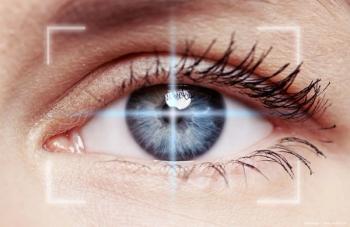
Presbyopia-correcting IOLs: Self-rated quality of vision and optical phenomena intensity
Spectacle independence is not the main factor that determines patients’ lens selections, according to study investigators.
German researchers from the Department of Ophthalmology, Goethe-University, Frankfurt am Main, Germany led by Myriam Böhm, MSc, MD, found that diffractive extended-depth-of-focus (EDOF), trifocal, and panfocal multifocal intraocular lenses (MIOLs) all provided good total self-rated quality of vision with mild-to-moderate degrees of optical phenomena under all lighting conditions. The EDOF lenses reportedly causes weaker halos resulting in better nighttime driving.
This prospective comparative case series1 included 108 eyes that had been implanted bilaterally with 1 of the lens types. The investigators assessed the self-rated quality of vision, degree of symptom intensity in 3 lighting conditions, quality of everyday lifestyle activities, spectacle independence, and contrast sensitivity.
IOL assessment
All lenses were found to function well and provided good total self-rated quality of vision in the 3 lighting scenarios.
The patients with the EDOF lens reported slightly better total quality of vision as measured on the Visual Analog Scale: EDOF lens, 9.8±6.67; trifocal lens, 22.2±7.09; and panfocal lens, 19.6±16.25, a difference that reached significance (p=0.041).
Similar percentages of patients reported optical phenomena that did not differ among the 3 lenses (p>0.05) and the degree of the optical symptoms were considered mild-to-moderate in the 3 lighting conditions, but the EDOF lenses were considered to have a significantly (p<0.05) lower intensity of halos compared with the other lenses.
A comparison of the quality of the patients’ everyday lifestyle activities and contrast sensitivity found that the 3 lenses fared the same. All patients with panfocal and trifocal lenes were spectacle independent. While 44% of the patients with the EDOF lens needed reading glasses, all reported that they would opt for the same lens again despite the need for reading glasses. This indicated that spectacle independence is not the main factor that determines patients’ lens selections, according to the investigators.
Reference
Böhm M, Hemkeppler E, Kohnen T. Self-rated quality of vision and optical phenomena intensity of diffractive presbyopia-correcting intraocular lenses. EDOF, trifocal versus panfocal. J Cataract Refract Surg. 2021;doi: 10.1097/j.jcrs.0000000000000862
Newsletter
Don’t miss out—get Ophthalmology Times updates on the latest clinical advancements and expert interviews, straight to your inbox.
















































.png)


